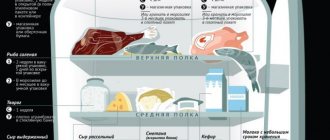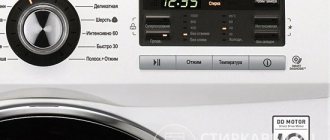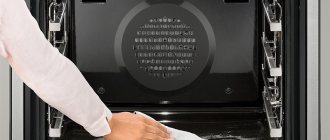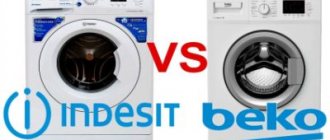I still have a Mir refrigerator in my garage - big and strong. Served my parents for a quarter of a century. I remember at least once a month we sat all day without a refrigerator. Mom took the groceries to a neighbor while our main attribute of civilization (after the TV) was defrosted, then washed and dried.
The Mir refrigerator is large and strong.
Defrosting modern refrigerators no longer requires such attention. For young people, in general, the expression “defrosting the refrigerator” means its breakdown, but not a mandatory monthly procedure.
There are many cooling systems, today I’ll tell you what no frost is, what its advantages and disadvantages are, how many times and when to defrost the refrigeration unit.
How the no frost system works
- built-in fans create movement of cold air inside the chamber;
- air currents instantly dry the moisture accumulating on the walls;
How the know frost system works
Frost does not have time to form, and snow drifts do not occur in such a refrigerator. The operating principles of the no frost system were used in the middle of the last century for freezer compartments. There are many modifications that are used in designs of different brands. Let's look at some of them.
Advantages and disadvantages
The main advantages of No Frost refrigerators are:
- defrosting does not take much time and is carried out once every six months no more often. The rest of the time the device does everything itself;
- complete cooling of the device, regardless of the location of the shelves;
- repairs at home become simple;
- rapid restoration of temperature conditions;
- cleansing takes less time and effort;
- metal grilles are a thing of the past; they have been replaced by transparent plastic shelves;
- The evaporator is reliably protected from damage.
Users highlight some disadvantages in such models:
- windy freezing dries out food. If you cover the food with cling film, the problem disappears;
- Noisy operation of the refrigerator. In modern models you will rarely hear a hum that alternates with periods of calm;
- large waste of electricity;
- high price.
What is the difference between a drip system and a no frost system
There are fans inside the case.
In the no frost refrigerator, air circulates due to fans operating inside the case. The walls are always dry, there are no snow coats.
Condensation forms on the rear wall of the evaporator
With a drip system on the back wall of the refrigerator, which plays the role of an evaporator, condensation constantly forms. This is the moisture that is released during the cooling process of food. After a while, too many drops form and they begin to flow into the pan. The water then evaporates again and the cycle repeats. It is believed that the participation of the refrigerator owner in this process is not required. But you still need to monitor the unit with a drip system.
When the drain hole becomes dirty, it becomes clogged and a puddle forms under the box of cucumbers and tomatoes. Keeping the refrigerator compartment clean and properly defrosting the refrigerator will help avoid this problem.
Types of system
A modern function can have several options. Some models are equipped with a Frost free system, which means a lightweight version. In such units, only the freezer compartments are equipped with ventilation, and in the refrigerator compartment only the drip method of moisture removal operates.
More expensive devices have Full No frost systems built in, which means the most powerful use of the function. In practice, such models are equipped with two autonomous systems, each with its own compressor and fan. One circuit works for the freezer, and the second serves the refrigerator compartment. The units belong to a high class of power and efficiency of cooling equipment.
When deciding which refrigerator to buy - with or without a ventilation system, it is worth taking into account the air humidity in a particular region. This technology will be most in demand in hot and humid climates. Water will be effectively removed from the air, and food will remain fresh.
But if the air is already dry, then a drip system for removing moisture will be sufficient. The food will be less weathered, and the operation of the device will be less noisy. You will need the habit of correctly distributing food on the shelves of the refrigerator.
Honestly about the pros and cons
I have no question whether this no frost feature is needed. My wife is freed from the need to monitor how much ice has accumulated on the walls and does not worry about when and how best to defrost the refrigerator. Let's consider all the pros and cons in more detail.
Advantages
The popularity of “frost-free” models is explained by the following factors:
- You will have to turn off and defrost a refrigerator with a no frost system a maximum of a couple of times a year. We do this before the New Year holidays and at the end of spring. Basic care involves periodically wiping the shelves and doors.
- Condensation is excluded, so there will be no puddles under the refrigerator, you definitely won’t flood your neighbors, and you won’t ruin the laminate.
- In the presence of internal “winds,” the products cool several times faster, which means their preservation and taste are better.
- The temperature is the same on all shelves, except for the specially programmed “freshness zone”.
- After closing and opening the door, the temperature is restored almost instantly.
No frost technology involves dry freezing. I take the chicken out of the freezer without a crust of ice. This is what I like best.
Flaws
Nothing in the world is perfect, “but frost”, including:
- fans noticeably eat up the interior space of the chamber, so with the same internal volumes, a refrigerator with such a system will be larger;
- such units consume more energy resources;
- if the model is not equipped with enhanced sound insulation, there will be more noise from household appliances;
- air currents dry out products that are not wrapped in food grade polyethylene.
The last minus is not relevant for our family; we are used to storing everything in plastic containers.
Understanding the concepts
Modern refrigeration equipment is represented not only by different types of systems (static or No Frost), but also by different cooling methods. No Frost has several types of cooling device, each of them has a different operating principle.
Differences between Total No Frost and No Frost
With the Total No Frost system, the freezing chamber and the main compartment are autonomous devices placed in a single housing. Each of them is equipped with a personal cooling circuit, fan, compressor. Cold air circulates between them through special openings. If the compressor in the freezer fails, this will not affect the operation of the main compartment in any way.
The Total No Frost function is a guarantee of energy efficiency, high power of the device and high-quality storage of products. It prevents the formation of mold and unpleasant odors and does not require defrosting the refrigerator.
The difference between Total No Frost and No Frost is also that the latter operates according to the rule of dry cooling, and therefore, uncovered food can dry out.
Difference between Neofrost and No Frost
“No Frost” is such a variety of cooling systems that every buyer can find his ideal option. One of the newest technologies is Neofrost. Its peculiarity is that the main chamber and the freezing compartment are equipped with two separate cooling systems.
"Neo Frost" allows you to maintain an optimal climate in the refrigerator, maintain up to 90% humidity, which means you do not overdry food and prolong its freshness as much as possible. Food cools much faster, and odors do not mix between compartments. The technology was developed by the manufacturer Beko. According to experts, it is the future of refrigeration equipment.
Neofrost differs from No Frost in the autonomy of the cooling devices of the freezer and main chambers. It retains moisture as much as possible, ensuring high-quality storage of food. If you choose between these two technologies, then the advantages are more on the side of Neo Frost.
Low Frost or No Frost: what to choose
No Frost defrosting is a process that does not require manual work. Ice does not appear inside the refrigerator chambers, and the ice that forms on the compressor or pipes quickly melts due to the operation of the heating element.
With Low Frost you still have to defrost the freezer. The evaporator is located inside the freezer compartment, retaining moisture well and maintaining the temperature at the same level. But ice, although a thin layer, gradually forms inside the refrigerator. Therefore, sometimes it needs to be defrosted manually. Compared to older models, defrosting a freezer with the Low Frost function is much faster and more convenient. This function is installed only in the freezing compartment; it does not apply to the main compartment.
When choosing between these two cooling devices, consumers give preference to No Frost, although the price of equipment with Low Frost is usually lower.
Differences between the drip system and No Frost
No Frost in the refrigerator is an excellent technical solution when there is no time or no desire to clean and defrost. The system works so that the temperature distribution is uniform across all compartments, thereby prolonging the freshness of all products.
Despite numerous laudatory videos and reviews regarding No Frost, arguing about what is better, No Frost or a drip refrigerator, is to some extent a mistake. Both cooling systems have undeniable pros and cons.
The drip device works completely differently than No Frost. The back panel of the chamber is actually the evaporator, where condensation forms. Over time, there is too much moisture, it goes into the pan, where it also gradually evaporates. Despite the cyclical nature of the process, if the internal surfaces are not dried in time, the drain becomes clogged. Then liquid appears in the food compartments. Drip models require frequent defrosting, at least twice a year.
Advantages of drip technology:
- the chambers are more spacious than those of devices with No Frost;
- silent operation;
- low power consumption.
The disadvantages include:
- uneven temperature distribution: the bottom is colder than the top;
- defrosting of the refrigerator is required;
- moisture on the back panel freezes if the settings are incorrect;
- If you leave the door open for a long time, it will take a lot of time for the chamber to cool down.
“No Frost” is a cooling device that simultaneously facilitates the work of housewives and takes care of long-term storage of products. There is also slight condensation on the back panel of such a device. This nuisance is directly dependent on how long the doors were open and on the high level of moisture in the food.
Principles and sequence of defrosting
Instructions for defrosting a refrigerator with a “no frost” system:
- Set the temperature regulator to zero.
- Disconnect the unit from the power supply.
- Remove food from the refrigerator.
- Leave the door open. Let the temperature become equal to room temperature.
- Dissolve baking soda in warm water (2 tablespoons per liter jar).
- Wash the shelves and drawers removed from the chamber with a soda solution, and rinse them with a water jet.
- Wipe the walls of the refrigerator chambers with an hygroscopic cloth soaked in a soda solution.
- If you find mold on the seals, wipe them with lemon juice.
- Finally, rinse the entire refrigerator with plain clean water.
- Thoroughly wipe the shelves, containers and walls of the refrigerator with a dry, lint-free cloth.
It will take some time for the refrigerator to dry completely. Usually one hour is enough. Then plug in, set the required temperature and return the food to its place.
The importance of the No Frost system
So, what does No Frost mean? Literal meaning "without frost". Such a system is designed to maximally clean the internal space of the unit from freezing and icing. If this is not done, then the cooling surfaces become “overgrown” with layers of frost that turns into ice. This prevents the cold temperature from being fully released, and the atmosphere inside the refrigerator begins to warm up.
As a result, products, being in an environment with elevated temperatures, quickly become covered with bacteria and spoil. An unpleasant odor appears inside, which is absorbed into the plastic walls of the refrigerator and begins to spread to all products. Opening the unit door allows the smell to enter the apartment. To prevent all these negative consequences, the No Frost function has been developed.
Useful video
On the Internet you can read advice from “experienced” people who talk about quick ways to defrost a refrigerator using a hot hairdryer or a cup of hot water. I categorically do not advise doing this: you risk damaging complex equipment. From my own experience I can say: these tips are not needed in principle. No frost eliminates the ice build-up that our mothers and grandmothers used to beat off with a hammer in their ancient freezers.
Advice. Use a soft-bristled brush to clean hard-to-reach areas, and clean the ventilation holes with cotton swabs.
Possible faults
Even with advanced refrigerators, troubles and even serious breakdowns occur.
If water has accumulated under the refrigerator or it is too noisy, this is a signal of a problem. If there is a loud noise, the compressor is worn out. The reason for the incorrect operation of the refrigeration unit may be a malfunction of the thermostat or temperature sensor.
Loosely closed doors or worn seals also interfere with the normal operation of the refrigerator. A freon leak or interruption in the functioning of the evaporator cannot be ruled out. With some modifications, the drainage hole may become clogged.
What happens if you don't defrost the refrigerator?
Manufacturers of “ice-free” refrigerators assure that defrosting is not required. I think this is a marketing ploy. To the question of whether it is necessary to defrost a refrigerator with a no frost system, I will answer in the affirmative. It is necessary to take care of the refrigerator, otherwise even in a super-modern unit mold will develop, an odor will appear, and household appliances will turn into a source of infection.
The rules for defrosting a no frost refrigerator are not complicated, the procedure will not take much time. You won’t see snow in it, but there are bacteria invisible to the eye, which cannot be gotten rid of unless you turn off the unit for a while.
A refrigerator with a no frost system is convenient, practical, and does not require much maintenance. Yes, its price is slightly higher compared to its drip counterparts, and it is larger in size. But these shortcomings pale in comparison with its advantages. A better cooling system has not yet been invented.
Is there still ice?
No matter what adherents of No Frost systems say, frost and ice still form in them. But it accumulates on the evaporator, or the wall behind which it is located. It’s just not visible to your eye, it’s not in the refrigerator compartments.
Thawing occurs according to the drip principle. In refrigerators with a conventional or linear compressor, the defrosting process begins when the cooling process is completed. The compressor stops, the evaporator temperature rises, ice and frost begin to melt and water flows into a special tray.
In refrigerators with inverter and linear-inverter compressors, defrosting occurs in exactly the same way. But the process begins when the compressor starts working at minimum power and the temperature in the refrigeration circuit rises above 0 degrees.
Some models of refrigerators have heating elements installed on the evaporator. They serve to warm up the inside and force defrost. Such heating elements can work in three ways:
- The heating element turns on after a certain period of time;
- The heating element is turned on when the temperature sensor is triggered;
- The heating element starts to heat up if you turn on the defrost mode.











